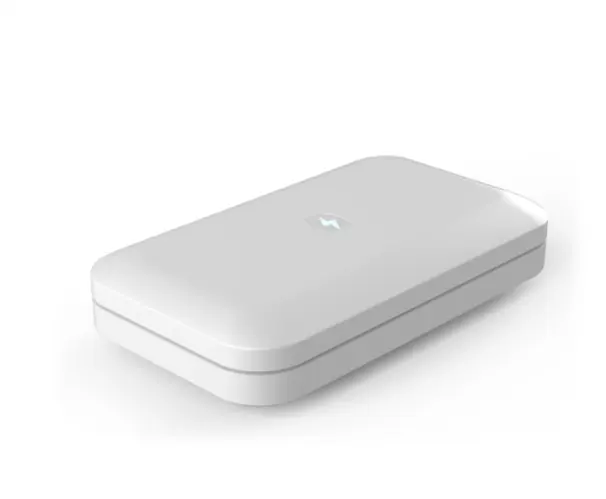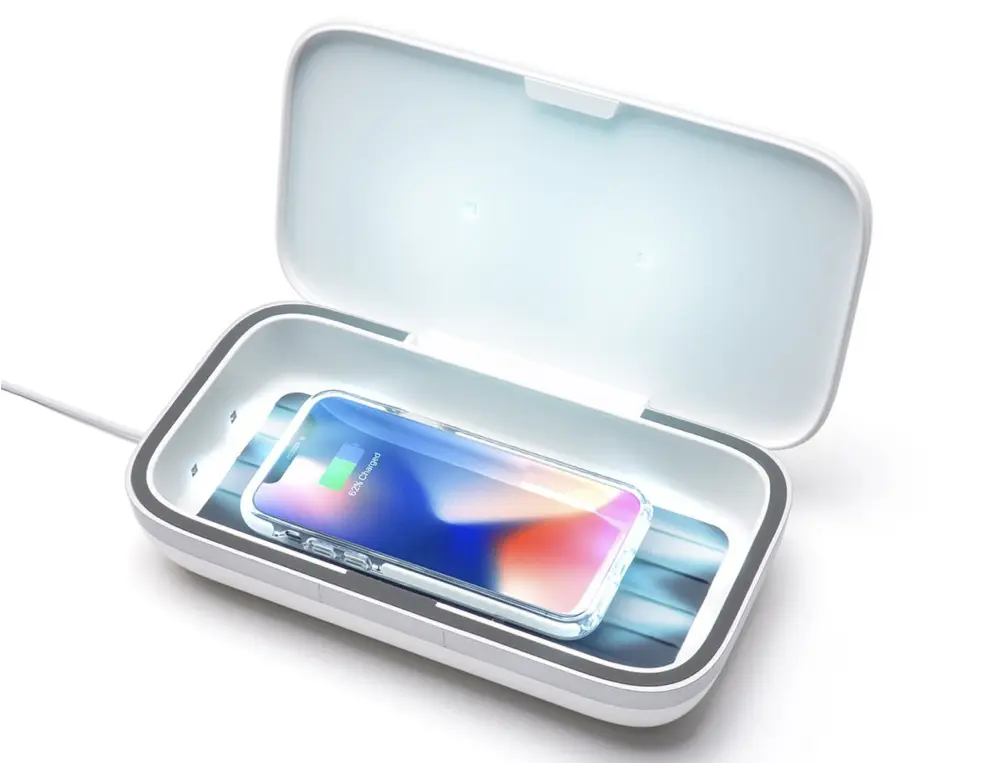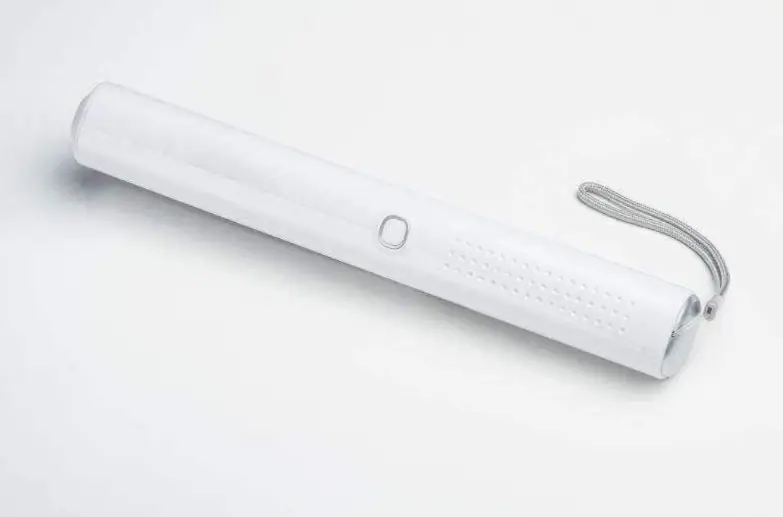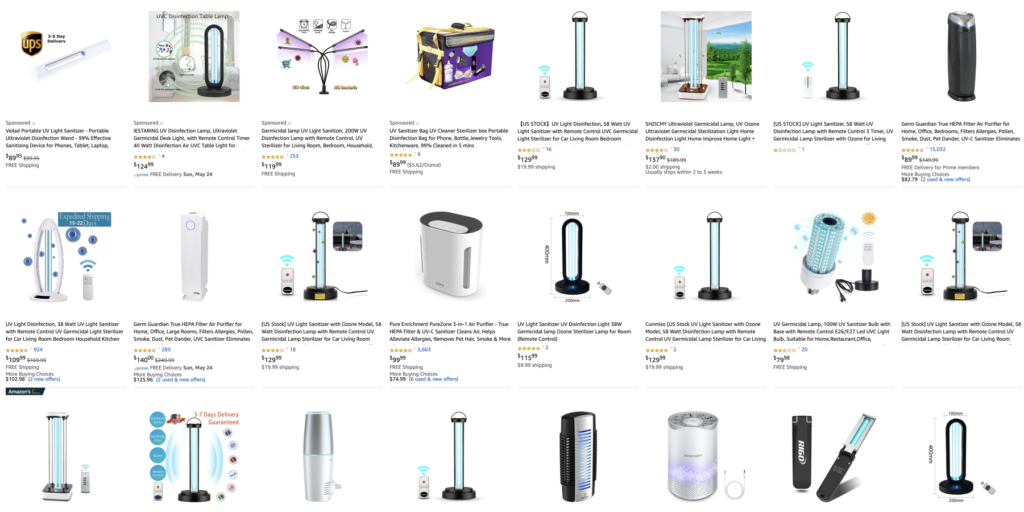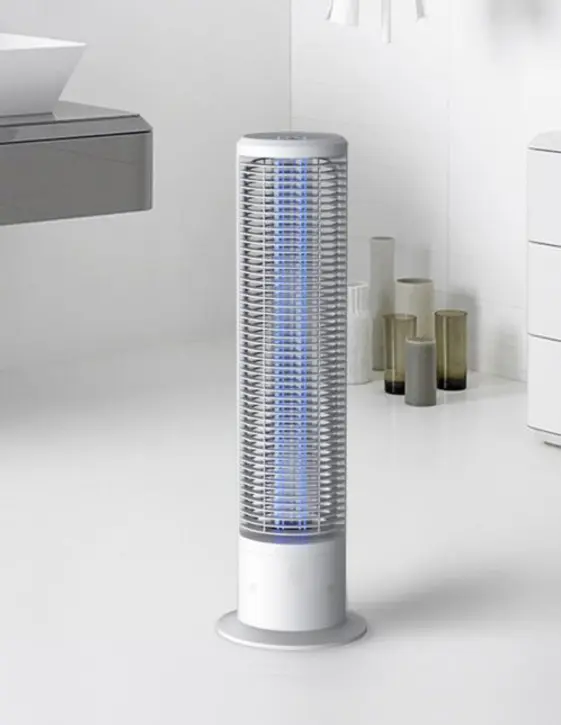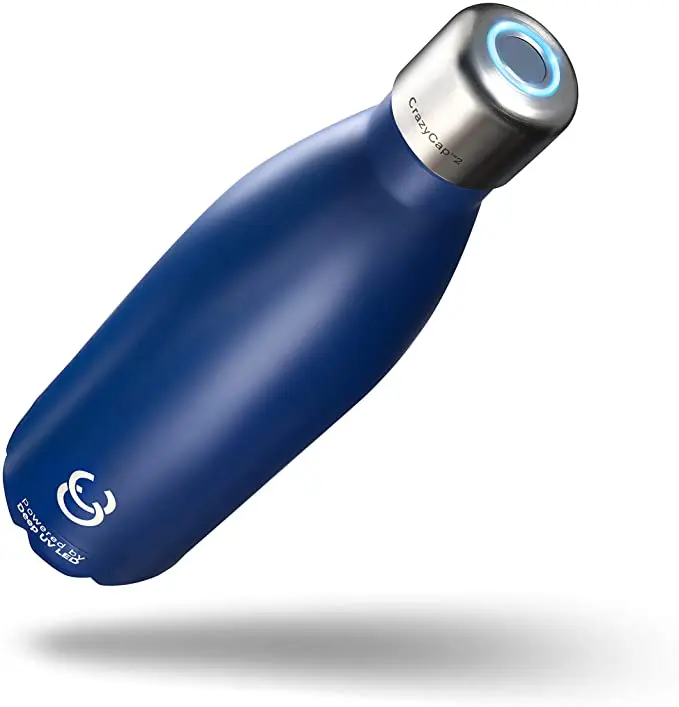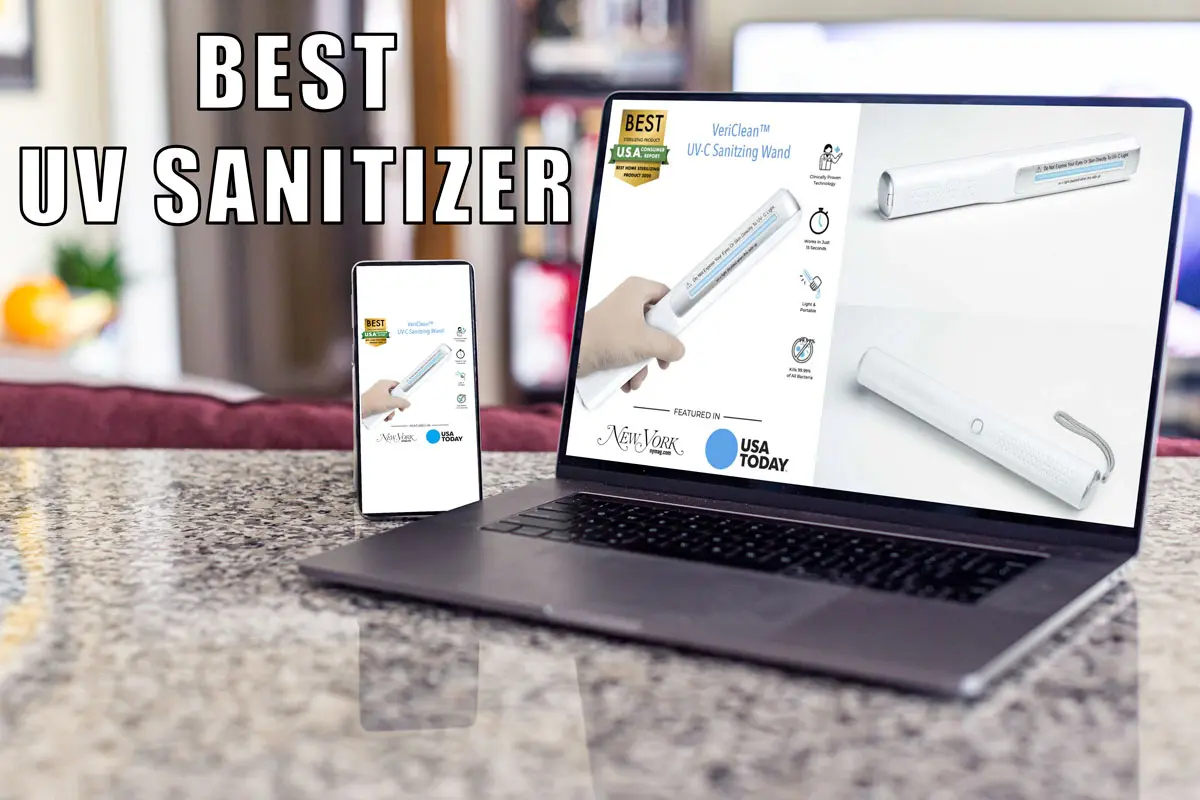
The Best UV Sanitizer Lights
The current global pandemic has quickly hastened the public’s interest in UV sanitizer lights– ultraviolet UVC spectrum bands that have been shown to kill germs ranging from bacteria superbugs to viruses.
But there is much confusion about the effectiveness, safety, and use of these products. Should you get UV or UVC? And what the heck is far UVC light? Will it clean my phone?
We answer all these questions and more in our guide to the best UV sanitizer lights.
Table of Contents
Best UV Phone Sanitizer: PhoneSoap
PhoneSoap is the most popular and searched for UV phone sanitizer brand– and for good reason. PhoneSoap produces a quality product and was featured on Shark Tank a few years back. Their phone cleaners have been independently tested and shown to kill virtually all bacteria on phones placed inside. And PhoneSoap has received favorably reviews from several high-profile mainstream outlets, including Business Insider and the Huffington Post.
Buy PhoneSoap 3 for $79.95 right here.
Buy PhoneSoap Pro for $119.95 right here.
We get into the details about UV and UVC light further down in this story, but PhoneSoap has been tested and shown its effectiveness in killing germs on phones. Here’s a clip from the Discovery Channel which was posted directly to the company’s website:
Hard to argue with that.
PhoneSoap has two new phone sanitizers available for preorder and shipping in June, both of which we expect to become market leaders: PhoneSoap3 and PhoneSoap Pro.
Each product uses powerful and effective UVC light to kill germs on items placed inside. They both come in a range of desirable, Apple-like colors (Periwinkle, anyone?). And both the 3 and the Pro will sanitize your phone in 10 minutes or less.
The difference between the cheaper PhoneSoap 3 ($79.95) and PhoneSoap Pro ($119.95) is the size and speed with which they clean. The Pro claims twice the light, meaning a cleaning time of just five minutes, along with a much larger bay to fit both bigger phones and other items.
In case you’re wondering, yes, you can still hear your phone alarm from inside the box. PhoneSoap can charge your phone as well, but sadly there is no wireless charging as the device sits elevated off the bottom so the UV light can hit it.
We like PhoneSoap as the best UV phone sanitizer because this is what they do. The company has one speciality: cleaning your phone. Unlike other companies, which manufacture other mobile or light products, including our runner-up pick, PhoneSoap was created for, and specializes in, phone sterilization. This means they keep iterating on their products, already offering a version 3.0, a pro version, and, for larger items still, a HomeSoap(!). There is also the AirSoap. How Apple-y of them.
But for real, PhoneSoap produces the highest quality UV phone cleaner and at price point in-line, or even less than, their competitors.
Also Good: Casetify UV Sanitizer
Casetify is a favorite mobile case and watch band company. We like them overall, but their UV Phone Sanitizer has repeatedly been sold out and they don’t have the track record PhoneSoap does. However, we do appreciate Casetify calling out that they use mercury-free UVC LED lights.
Buy Casetify UV Sanitizer for $120 right here.
Best UV Sanitizer Wand
Generally, we prefer UV light sanitizing boxes to disinfect. This is due to the fact that UVC light is harmful to human skin, and thus you want to minimize potential contact.
However, for some items it’s just not practical or feasible to put them in a box.
That’s where UV light wands come into play. Similar in size to a curling iron, with UV wands, disinfecting light can be wanded over items to clean them.
There appears to be no shortage of these products flooding the market right now. So we want to go with a name brand from a retailer, rather than finding the cheapest option on a platform seller like Amazon.
We like the VeriClean Portable UVC Wand.
Battery-powered, VeriClean’s UV wand is highly portable. The company claims it can clean most items in 10-20 seconds.
Here are cleaning times from the product page:
- Personal hygiene items such as brushes, toothbrushes, and razors: 5-10 seconds
- Kitchen utensils: 10 seconds
- Counters: 10-20 seconds
Again, we prefer “phone cleaners” (which actually can clean a range of small products), but there are some things you just can’t (or don’t want to) put in a box.
Buy VeriClean’s UVC Sanitizer Wand for $79.97 right here.
A Word About UV Room Sanitizers
Popularized in hospitals, UVC room sanitizers have the potential to quickly and efficiently disinfect rooms. For obvious reasons, this is a highly desirable outcome right now.
However, using UV light to disinfect can be dangerous to the skin and eyes. As such, room sterilizing light should be used judiciously.
From a more practical standpoint, UV light can only kill what it can see (literally), and so while it is great to use in open settings like hospital rooms with hard surfaces and bare walls, most homes simply don’t have those traits.
Further adding to our concern, countless products have popped up on Amazon in recent weeks trying to capitalize on the demand for virus-killing devices. We are suspicious about many of those products’ origins and reliability. Not to mention safety. Behold:
This just looks and feels like a news story about UV lights spontaneously catching on fire.
Therefore, we don’t recommend any UVC room sanitizing lights right now.
Sure, you can head on over to Amazon and see what’s available, find reviews that seem favorable, and give one a chance. It will probably work. But it might not. And since even with a high quality product it might be difficult to disinfect all the nooks and crannies of a modern home, we don’t think these are worth recommending right now.
A Promising Product
One product that looks like it could change our views about room sanitizers is the Apollo from Smart UV. Available for preorder today, the Apollo boasts a five-meter motion sensor for auto shutoff should a person or animal get nearby.
It also has variable cleaning times – 15-60 minutes in length – and a sleek design that doesn’t look like an obstacle from Level 2 of Sonic The Hedgehog.
A smaller version of the Apollo, which is currently available for sale, is the Smart UV Portable UV-C Sterilization Lamp.
From the product page:
[Note: The ozone produced from Smart UV contains odor and should be ventilated for 45 minutes after disinfection]
Harness medical-grade sterilization in a portable UV-C lamp. For larger rooms, you can use multiple Smart UV’s to increase coverage. Sizing at just under 6 inches, Smart UV is extremely portable and easy to place anywhere in your house or on-the-go.
The lamp is portable and great for small spaces, like hotel bathrooms, so we can envision a use. But the longer cleaning time (30 minutes) + 45 minutes to fumigate the air from the stench of ozone (whatever that smells like) limits its use and perhaps creates more issues than it solves.
Best UV Sanitizers For Other Products
Water Bottles
One choice here, and it gets 4.5 stars on 108 reviews from Amazon: CrazyCap UV Water Purifier Cap and Insulated Self Cleaning Water Bottle. Get all that? It’s a real… mouthful.
It sounds… crazy… but the CrazyCap is like four products in one. Using a UV led light inside the lid, the CrazyCap purifies and sterilizes both the water and the bottle, which is made with high-end stainless steel. Or you can use the cap with most other water bottle brands. In addition, you can use it as a micro wand to clean other surfaces.
It gets glowing reviews from verified users on Amazon, and is available for Prime shipping.
Buy the CrazyCap UV Water Purifier Cap and Insulated Self Cleaning Water Bottle for $69.95 right here.
Baby Products
One obvious application for UV sanitizing products is baby products. Bottles, utensils, pacifiers, even toys– all items kids handle frequently and put in their mouths.
The Munchkin Portable UV Sterilizer aims to solve this problem by using UVC light in a portable, battery powered device.
Reviews on Amazon are, however, mixed.
While the Munchkin Portable does get four stars on 203 ratings, it features a high proportion of one-star reviewers claiming that the product simply doesn’t work, specifically on battery.
The common thread is that the battery doesn’t last and typically requires the device to be plugged in to use.
So fit for this product depends on your use case. If you plan on leaving it home and plugged in, then it should do the job. But if you plan on taking it around with you connected to a bag strap – how the product is advertised – and using it with batteries, it may not be worth the purchase.
It’s less than 20 bucks, however, so might be worth a flier on it as a portable option.
Buy the Munchkin Portable UV Sterilizer for $19.53 right here.
UV Light’s Effectiveness in Sanitizing
All of the products listed here purport the effectiveness of ultraviolet light to sanitize a range of products and surfaces.
The specific type of UV light they all use is from the UV-C spectrum, which generally ranges from 100nm to 290nm. Most of UVC disinfecting products on the market hover around 250nm.
This is a form a short-wave UV light. Sunlight is longer wave UV-B light from 290nm to 320 nm. The longest wave UV light, UV-A, is more commonly found in things light “black lights.”
Shorter form waves, like UVC, are harmful to humans. Particularly the skin and eyes. It can lead to burns and cancer. Full stop.
But does it kill bacteria and viruses?
Yes.
From the National Academy of Sciences:
UVC light has been found to destroy viruses and other microbes on surfaces in hospitals. But it is not widely used in hospitals or other health care settings. The U.S. government and the UV technology industry are working to define standards for UV disinfection technologies in healthcare settings.
Most UV sanitizers have not been tested against the novel coronavirus, SARS-CoV-2. But UVC light been shown to destroy related coronaviruses, including the one that causes the disease MERS.
Plenty of studies have been done to show UVC light’s effectiveness to disinfect. The topic has received much coverage lately, including from the New York Times.
In short, UVC light is effective at killing many bacteria and viruses. However, it has not been directly tested on Coronavirus.
Does UVC Light Kill Coronavirus?
No one knows for sure. But UVC light has been shown to kill other coronaviruses, including SARS, and most researchers agree it is likely somewhat effective. And indeed, it is beginning to be rolled out in large-scale settings, with the NY subway system recently announcing they will use UVC light to disinfect subway cars.
However, scientists urge caution in using UVC light at home to disinfect surfaces, partly because it can be dangerous to humans. They also note, as we did in this article, the reliability of new products flooding the market.
This is why we recommend small-scale use on items like phones, keys, and toothbrushes, which might not otherwise be sanitized anyway. And we encourage selecting from only a handful of brands who are transparent about development of their products.
This use-case results in a generally more clean phone without the risk (and cost) of more expensive devices that purport to disinfect entire rooms.
What About Far UVC Light?
This could be a game-changer.
Research from Columbia University into a narrow wavelength of UVC light, far UVC, has shown promising early results for wide-range use.
Consisting of a narrow band of UVC light from 205nm to 230nm, far UVC light has been shown to kill bacteria and viruses without harming humans.
The key is that the wavelength of light used with far UVC is strong enough to kill small viruses but can’t penetrate human skin cells.
Recent studies have shown that far UVC light can kill airborne coronavirus pathogens that lead to common colds. Researchers are currently testing it on SARS-CoV-2.
Specifically, far UVC light is currently being used on mice to further verify its safety on skin.
Columbia University researchers are testing hairless mice for a period of 60 weeks at high exposure, eight hours per day, to see if they develop any side effects.
Thus far, more than halfway through the study, the results have been promising– no skin or eye damage has been observed in the mice.
If the study concludes with a favorable outcome, we could see the use of far UVC light in a range of public places, including airports, train and subway stations, and perhaps even schools.
It’s unclear how the public will feel about being exposed to a constant stream of UV light – even at a wavelength that has been shown to be safe for human skin – but if far UVC can effectively kill pathogens without harming humans, its impact will be sweeping and immediate.
You may begin to see these products roll out quickly for home and office use.
For now, though, the availably of far UVC products is relatively limited to highly specialized use, and they are not widely available commercially.
Which Product Should You Buy?
You should buy a PhoneSoap.
Right now, it can clean many small items reliably. PhoneSoap is a trusted brand with an established product.
There are too many concerns on both the safety and reliability of wands and room sterilizers. UVC light exposure can lead to genuine harm in humans, so until a more reliable, tested product with safety features comes on the market, we would avoid these products for now. The Apollo looks promising.
We are bullish on far UVC and its applications across a range of public, private, and office uses. But there are no readily available products on the market yet. And some testing still needs to be done.


